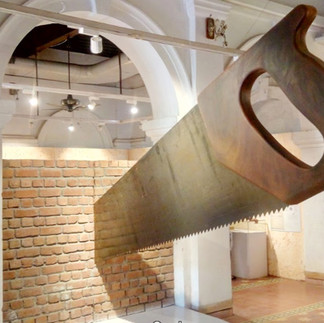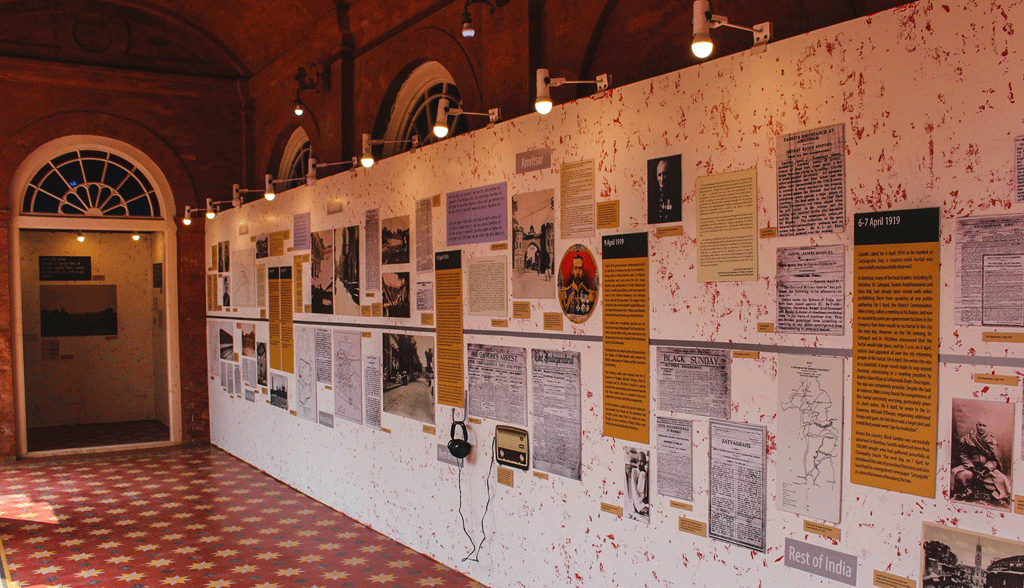Can Nationalism ever be just 'entertainment'?
- Guillaume de Bassompierre
- Nov 7, 2022
- 3 min read
Every day – at dawn, when it opens, and at dusk, when it closes – crowds are welcomed at the Wagah Indo-Pakistani border post in Punjab to witness the raising and lowering of the flag ceremonies. On both sides, thousands of spectators come to cheer their peacock-crested soldiers on, wave flags, and sing along to hymns and anthems blaring through saturated sound systems.
The atmosphere is rather electric and ‘bon enfant’, akin to being in a cricket stadium supporting your national team. It hadn't changed much from when we first saw the same ceremony from the Pakistan (Lahore) side 17 years ago. Yet, the same feeling prevailed. Beyond the theatrical showmanship, the
exaggerated chest-thumping gestures, the shiny uniforms, and bordering-on-ridiculous goose steps, the undercurrent is definitely, though perhaps only subconsciously, quite aggressive. As crowds blare out proud "Hindustan Zindabad" (Long Live India) to echo cries of "Pakistan Zindabad" emanating from just across the gate, the whole thing feels like an ode to human stupidity, a ‘performance art’ monument to our lowest, basest instincts: those meant to cultivate our feelings of superiority through ‘othering’ an opponent, a rival, an enemy defined by a line on the ground…
This feeling hit home even further when we visited the beautiful but dreary Partition Museum the next day. Located in Amritsar’s restored town hall, the museum documents and contextualises the traumatic events that took place just after India and Pakistan obtained their separate independence from Britain in 1947, forcing an estimated 18 million to migrate away from their ancestral homes and causing the death of possibly up to 2 million people (the body count was so high, there is no accurate record).

A tiny line on a map, drawn hastily by an oppressive colonial power that had stoked religious and ethnic differences to boiling point in a futile attempt to preserve its dominion. That’s all it took to unleash murderous, pillaging mobs to devastating effect. The resulting trauma, which separated families and tore apart communities that had been living in harmony for centuries, still affects the lives of individuals today, almost three generations later.
The museum's location, in a city that lived partition 'in the flesh', is chosen by design. Punjab is the province that suffered most as the two sister cities of Amritsar and Lahore, suddenly found themselves on opposing sides of the newly-created frontier, with their Muslim, Hindu and Sikh communities inflicting deadly harm on each other in a frenzied few weeks/months of mob violence targeting refugee convoys made up of former neighbours. While grand historical happenings have a tendency to reduce tragedies to mere statistical facts, the museum does a great job of allowing the visitor to understand the individual stories that weave History's tapestry. It is peppered with haunting personal testimonies of grief and loss that make it impossible to ignore the consequences of policy decisions at a human level.

Nationalism really is something I’ll never get used to or understand, least of all when it hits you in the face through grandiose, militaristic, frenzied posturing like the Wagah-border show. Throughout, I couldn’t help but wonder, a question perhaps reinforced by my own Belgian nationality: “What if these smiling, cheering, singing crowds were handed out weapons? How long before their bonhomie turned into calls for blood and revenge? When do we stop seeing humans on the other side of an imaginary line as ‘others’?”
















































Comments